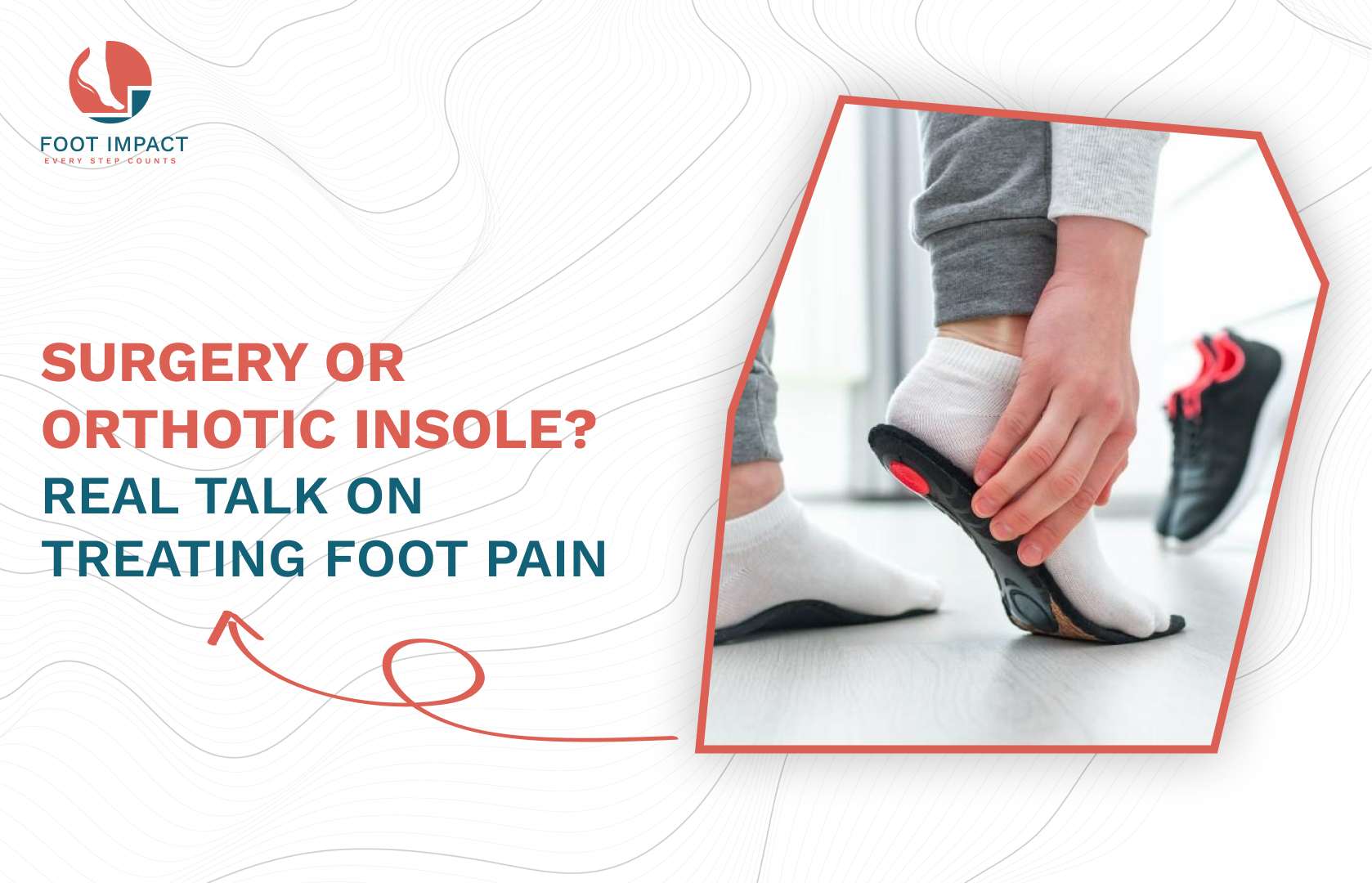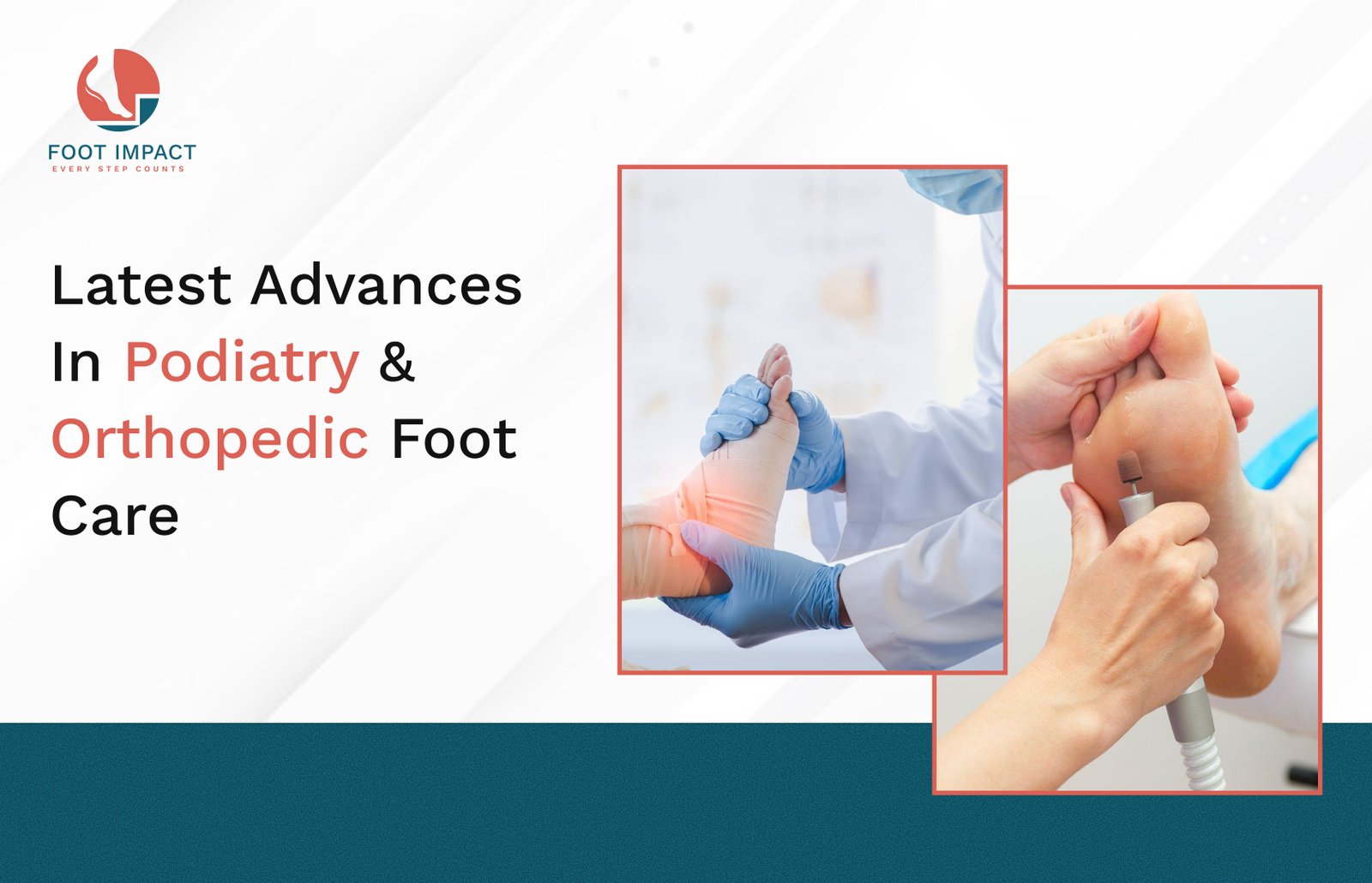Surgery or Orthotic Insole? Real Talk on Treating Foot Pain
When foot pain hits, you’re faced with a common question: surgery vs insole. It’s tempting to look for a quick fix, but the truth is that support-first methods often work better—and hurt less. This guide lays it out clearly: opt for insoles first and reserve more advanced options for later.
Why “surgery vs insole” Is the Right Question
You're weighing what truly solves your pain—cutting rebuilt bone, or corrective support underfoot?
Surgery is invasive, with risks and downtime.
Insoles offer comfort, correction, and low risk.
Studies show insoles help most people recover, often avoiding surgery altogether.
This article explores the surgery vs insole dilemma with practical advice and plain English explanations.
Common Reasons You Might Consider Surgery vs Insole
You might think about this when you have:
Heel pain from plantar fasciitis or heel spurs
Flat feet or fallen arches causing discomfort
High-arched feet placing excess strain on muscles
Midfoot pain (metatarsalgia) from pressure buildup
Early signs of bunions causing distress
These conditions often improve greatly with the right orthotic support—making the surgery vs insole comparison important from the start.
How Insoles Can Help First
To redistribute the plantar pressure- help to relieve the pain
To offload the areas- helpful in corn & Ulcers
Realigning the foot
Protect the sensitive areas of the foot
Enhance stability
Reduces muscular expenditure.
Why Custom or Over The Counter (OTC) Insoles Matter
Here’s how they compare:
OTC- These are comfort base, available off the shelf easily, not designed as per your feet, not considered your arch pattern or the gait pattern, accommodate your foot as it is & no pain relief only short term comfort. Last for 6-8 months.
Custom orthotics- Designed or made as per your foot , ideal for long-lasting comfort, often lasting 2–5 years without losing support. Mainly it is customized as per your pain complaints, considering your foot biomechanics.
Custom Orthotics- They are based on biomechanics of your feet, customized as per your arch & walking pattern (Gait), It gives initial discomfort (as it’s new for body & it’s correction) then long term relief. It’s available with the Podiatrist only, i.e. prescribed by the specialist. Last for 12 -18 months.
If the pain persists and the home remedies do not help you, then you should consult the podiatrist to find out the root cause of your pain & discomfort. Get the custom insoles for you.
A Support Plan That May Works
Follow this approach:
Keep your shoes supportive—they shouldn't squish once insoles are in
Stretch your calf and plantar fascia every day
Use tape or night splints if needed for extra support
Combine care with anti-inflammatory methods like ice or rest
This method should help in terms of pain relief, if it is caused by some impact or change in routine. In a week or two pain should subside.
Ideal way to manage the pain
If above thing dosn’t help you or the pain & discomfort continues then in that case
Consult Podiatrist
Get your foot & walking assessment done
Get your orthotic insoles from specialist
Wear it few hours daily to develop new normal or habit with the orthotics
Eventually use it for your entire routine
Go for the step by step advancing corrections in the orthotics
Meaningful Results from Good Support
Here’s what research shows:
Over 90% of plantar fasciitis sufferers see improvement with supportive care over six months
Custom and OTC insoles offer similar short-term pain relief
Custom versions may offer slightly longer-lasting support in some cases
Support reduction in foot strain, improved walking comfort, and even prevention of diabetic ulcers
All signs point to good support before considering more invasive routes.
When to Revisit the Question of Surgery vs Insole
Support-first strategies work for most. But you might consider stepping up when:
Pain persists despite best efforts over 6 months
Daily life is impacted—making work or exercise difficult
Chronic biomechanical issues worsen
You and your podiatrist agree advanced therapies (like shock wave therapy) are appropriate
Even then, insoles and non-surgical options are still the foundation—so surgery vs insole remains less about choosing one vs the other, and more about evolving treatment.
Non-Surgical Tools You Can Try First
Before jumping to surgery, explore these:
Podiatrist Consultation- To treat the root cause of the problem
Shock-wave therapy (ESWT) for chronic heel pain
Corticosteroid shots—offering short-term relief
Physical therapy, including fast-strength exercises for the fascia
Taping techniques to stabilize the arch
Night splints to gently stretch muscles overnight
Tissue work like massage or foam rolling
These options support or improve outcomes when combined with quality insoles.
What Real People Often Choose
Someone with new heel pain usually tries OTC insoles for a month; if they feel better, the plan continues. If not, a specialist fitting is next.
Someone with long-term arch problems might go for a custom orthotic up front, especially if they find OTC options too soft or short-lived.
Regardless, surgery remains a last resort—most people avoid it entirely.
Symptoms That Say “Insoles First”
You might try proper insoles if you have:
First-step heel pain
Arch discomfort after long standing
Tired, achy feet after mild activity
Mild swelling or minor pressure points
No obvious bone misalignment or deformity
These signs suggest injury is mild to moderate and support can shift mechanics enough to heal.
Signs to Reassess
Think about next steps if:
Pain lingers beyond three months despite solid support
Trouble walking or sleeping because of your feet
You have sharp, localized pain that isn’t improving
A podiatrist spots structural problems that insoles alone can’t fix
At that point, surgery vs insole becomes a more serious conversation—but still only after exploring harder support first.
How to Choose an Insole That Fits
Look for:
Firm yet cushioned materials, not squishy foam
Structured arch that doesn't collapse even after standing
Deep heel cup to cradle your foot and stabilize gait
Size-specific fits—trimming is okay, but shape matters
Durable materials like EVA or carbon fiber for long-term support
Brands that get good reviews include PowerStep Pinnacle, Superfeet, Spenco, and Redi‑Thotics.
DIY Self-care to Support Insoles
Identify your arch using the wet-foot test
Match your insole to your foot type
It should take out the pressure from forefoot area
Break them in gradually and push your wear time
Stretch daily—especially calves and the bottom of your foot
Ice sore points and rest when needed
Track progress and note pain trends over time
These self-care steps, combined with a solid insole, often bring relief.
When “Surgery vs Insole” Still Comes Up
The phrase is worth thinking about if:
Pain still lingers after 6 months of supportive care
You’ve tried stronger support, therapy, and mild injections
A podiatrist confirms structural issues that aren’t fixed with insoles
Even then, support remains essential. Surgery isn’t skipping support—it’s a higher-level structural change.
Final Thoughts
When it comes to surgery vs orthotic insoles, the smart money’s on starting with insoles and supportive care. That approach helps most people recover safely and effectively, with minimal disruption.
Here’s the bottom line:
Start with good insoles and supportive shoes
Add stretching, ice, taping, or splints as needed
Stick with it for a few months to track what really works
Reassess if pain persists or worsens
Consult Podiatrist
The surgery vs insole decision becomes much clearer when your feet are stronger and more aligned—giving you more options, fewer complications, and a better path forward.
Managing foot pain by jumping straight to surgery—cutting and stitching—without first exploring orthotics, isn’t the wisest move. As they say, an ounce of prevention isn’t just better than a pound of cure—it’s also kinder, safer, and more affordable.
By sticking with this well-supported, conservative route, you’ll likely find that the surgery vs insole debate resolves itself—without needing the knife.



